
Polar is a company out of Finland that started in the world of heart rate monitors all the way back in 1977. Even today, their heart rate monitors are some of the best in the world.
In the world of GPS wearables, Polar is somewhere in the mix of other companies that aren’t Garmin, which has a pretty good stranglehold in the industry. While Polar has produced a handful of GPS watches over the last decade or so, they’ve really made an effort to go all-in with the newest Vantage series, which has some solid strengths, but also some glaring weaknesses.
Our best case for runners to use Polar is that its products produce an array of incredibly in-depth training data and metrics. For the serious runner with serious training in mind, a Polar device is a valuable asset.
However, there are other areas where Polar needs to catch up, all of which we’ll cover below.

Polar Vantage V Titan Exploded View
Here’s a quick, but not an exhaustive list of specs for both the Vantage V Titan and the Vantage M. Like most GPS watches, both models have optical heart rate monitor, Bluetooth/ANT+ capabilities, GPS + Glonass, etc. They also have Galileo for Europe and QZSS for East Asia.
For an in-depth comparison with about 100 different specs, look here.

Polar Vantage V Titan
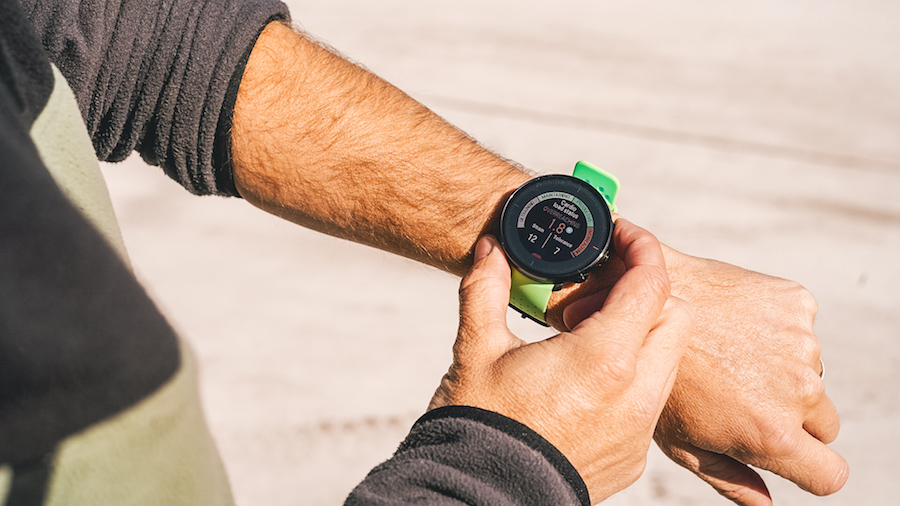
I put this at the top of all my GPS watch reviews because I think it’s important. Who wants to wear a watch that looks/fits like shit?
As I pointed out earlier, my last Polar experience with the M430 left me wanting a lot in the design department. Polar has made some solid strides in the design department.
All models in the Vantage series have the same general look. Material-wise, they’re quite different.
The Vantage V Titan comes in a titanium case with a laminated Gorilla Glass lens and has been tested to meet military standards. While I wouldn’t put it up against the Garmin Fenix 6 or even the COROS VERTIX in terms of rugged looks, it’s still a solid watch and will withstand a lot.
It comes with a durable silicone strap that’s essentially molded to the case body (instead of hinged like most watches). You can still swap bands but I’m not a fan of this design because of its inflexibility.
I didn’t find the strap to be as comfortable as other silicone bands. It’s tough for sure, but with that toughness comes less flexibility.
The Vantage M, on the other hand, has a glass-fiber-reinforced polymer case with a laminated lens (i.e. plastic on plastic).
It also has a silicone strap, but one that is much thinner and much too flimsy feeling. On top of that, it only has one strap loop to secure the excess strap, which drives me insane. Come on Polar, spend the extra two cents and put another loop on there so the strap is secured.
Shop Polar Vantage
Everyone is gunning for that top spot in the battery department, and Polar is running with the big dogs.
The Vantage V Titan can go for 40 hours in full GPS mode, while the Vantage M can handle 30 hours.
Both of these compare well against their competitors. In fact, the Vantage V Titan tops the Garmin 945 (36 hours), while matching the COROS APEX Pro (40 hours).
In practice, the claims hold up. After testing both the COROS VERTIX earlier this year, I’m spoiled and have little tolerance for short battery life. I was pleasantly surprised to see Polar knock it out of the park with this one.
I also really enjoyed the fact that Polar accomplished this without compromising the size of the watch.
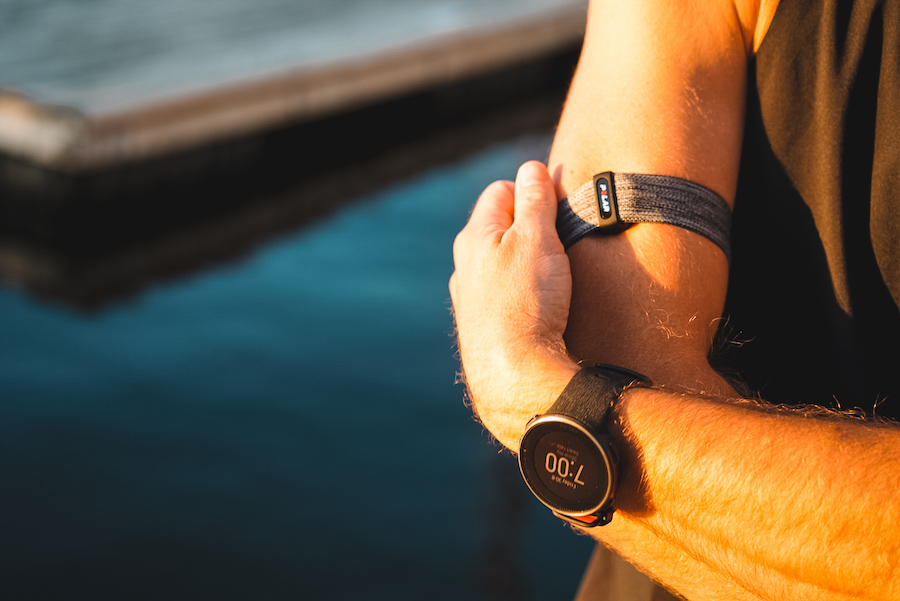
If you’ve read any other reviews, you may have seen that every GPS watch company is moving towards a new Sony chipset, which is highly-efficient and more accurate.
Out of all the newer watch testing I’ve done this year, I really haven’t found many that have severely gone off course (with the exception of some early COROS firmware that seems to have corrected itself).
Polar has noted that they’ve gone to great lengths to ensure GPS accuracy (of course, everyone says this). I’m pleased to say that throughout my testing, it was pretty solid.
Now, I had the Vantage V and Vantage M for a couple months, but was waiting on some firmware updates to test further. Post-firmware update I was able to get a couple runs in, and wish I could’ve done more, but I’m injured and cut off my running.
I’ll also say that I wasn’t able to compare my Garmin 235, so all the tests below are against COROS Apex Pro and COROS Vertix. However, I just got in a Garmin 945 and plan on updating these maps in the future.
Here are the results I found:
Location: Baltimore, MD
Distance: 4 miles
Topography: Relatively flat, city, but with parts along the water
Watches used: Polar Vantage V Titan (green), Polar Vantage M (red), COROS APEX Pro (blue), COROS VERTIX (purple)
As you can see, Polar held pretty well on this one, with the COROS APEX Pro deviating the most. Altogether, most of the lines stayed consistent.

In this shot, things are going well for everyone, then not so much. This was through blocks of the city, and the only one that stayed true to its course was the Polar Vantage V Titan (green).
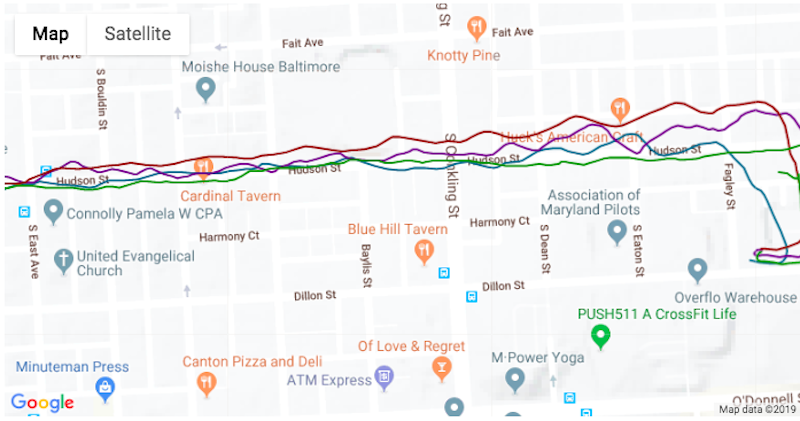
But then, in this section, the Vantage V Titan (green) was the only one that swung out from the rest.
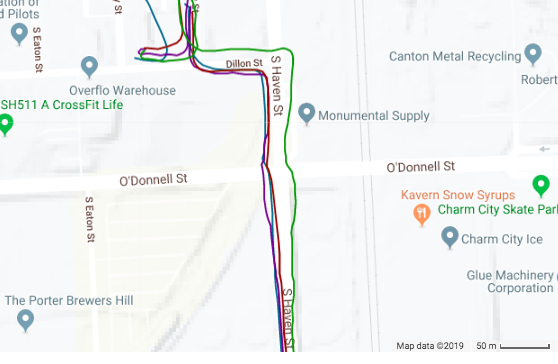
Location: Haunted f***ing cemetery in Baltimore, MD
Distance: 8 miles
Watches used: Polar Vantage V Titan (purple), COROS Apex Pro (blue)
Someone explain this shit. The line I took was the blue line (I didn’t criss-cross paths). Yet the Polar Vantage V has me perfectly criss-crossing twice, yet runs identical to the COROS in-between. Like, how is that possible?

Location: Parking garage in— you guessed it— Baltimore, MD
Watches used: Polar Vantage V Titan (purple), COROS Apex Pro (blue)
I always like to throw in a parking garage to see how far a watch will go off course. In this scenario, the COROS Apex Pro was actually perfect while the Polar Vantage V got a little scuzzy, but not terrible for a parking garage. It recovered well though.
Also, I’ve seen worse. The Garmin Forerunner 235 lost its mind in this portion during my COROS APEX Pro review and went way off course.
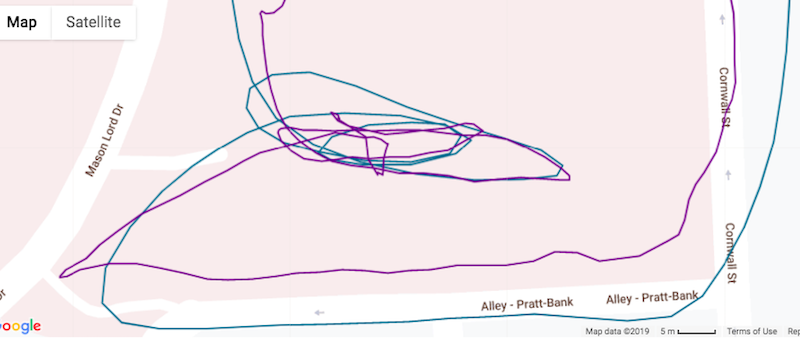
Both Vantage watches measure heart rate with the Polar Precision Prime™ sensor fusion technology. According to Polar, this “innovation combines optical heart rate measurement with other sensor technologies in order to rule out involuntary movement that might disturb the heart rate signal and produce unreliable readings.”
As I note in every review that I do, there is nothing as accurate as a chest strap HRM, so if you’re doing heart rate training, you should always go with something like the Polar H10 HRM.
Somehow, I lost my Polar H10 comparison data, so unfortunately for this review, I only have the Polar Vantage V Titan vs. my COROS APEX Pro. It helps that I have tested the COROS APEX Pro against heart rate straps and know that it’s not a good wrist HRM.
Again, I will update this section once I’m running again and am able to get more data. Or, if I end up biking, I’ll do the same.
Watches used: Polar Vantage V Titan (purple), COROS APEX Pro (blue)
On this run, I started out going up a pretty decent hill in my neighborhood, so right off the bat I know that the APEX Pro is lagging. On the other hand, the Vantage V Titan is right on. I did stop a couple times on this run for a short moment, which is reflected in the Vantage V, where my HR goes sharply down.
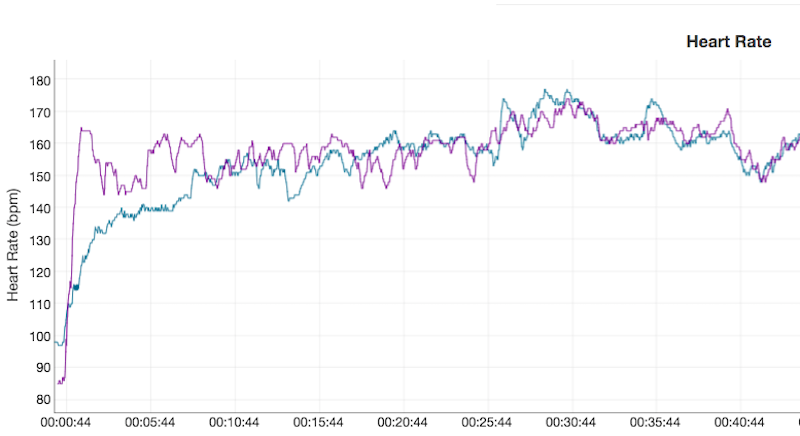
I was actually pretty impressed with the accuracy and quickness of the Polar Vantage V. Not sure why, since they’ve built their company on their heart rate devices. Polar is clearly at the front of the game on this one.
This is certainly not a strong area in the Polar universe, and I’m not sure why, because it’s not a new problem. Two years ago, I reviewed the Polar M430, and at the time, I found its syncing capability to be subpar. It still is.
It sometimes takes up to 5 minutes to sync the watch to the app (which then uploads to third-party apps). Sometimes it just drops in the middle and you have to start over.
No doubt this is one of the biggest weaknesses of the Polar app.
» In-Depth Metrics
No doubt, this is where Polar shines. They are maniacal about providing every possible insight to your training, and I’m pretty sure they’re not gonna stop until they’re able to analyze your DNA. I love it.
Honestly, you can go through your post-run workout data for what seems like an hour, looking at all the intricate stats.
Track your recovery status, training load, running index, even swimming metrics and fitness test.
It goes without saying, but to get the best out of your metrics and analysis, you should wear the watch continually. Doing so will give you a full picture of your health and training, and can tell you when you’re recovering, overreaching, or sitting on your ass too much.
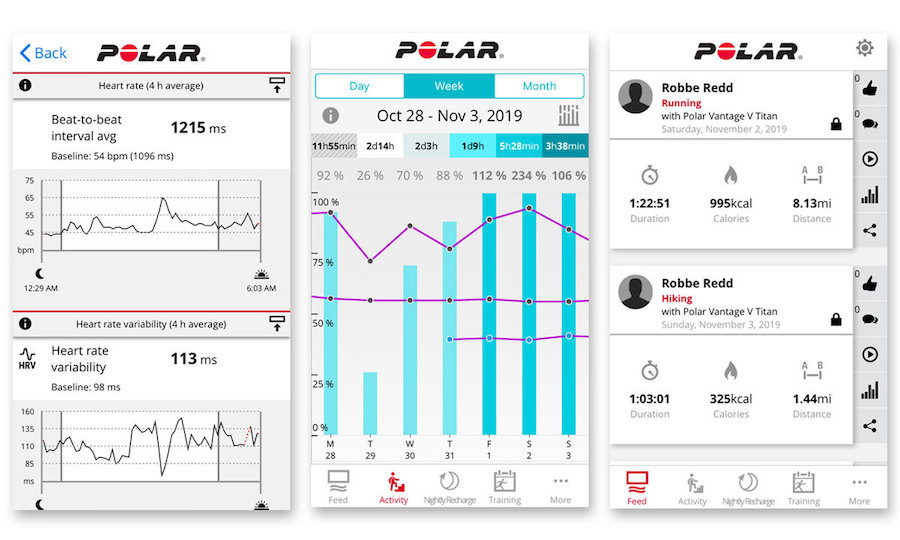
» Polar Flow Web Interface
Polar put a lot of time into developing its web interface, also known as Polar Flow. While you can see a lot of data within the Polar app, the Polar Flow web interface is where the breadth of your data can be seen and analyzed. It’s much easier to understand than the app, which can be pretty crowded at times.
In the diary tab, you can choose training history, activity history, recovery status, and sleep. Each of these provides a graphical interface for viewing literally everything you do throughout the day. It’s actually very cool.
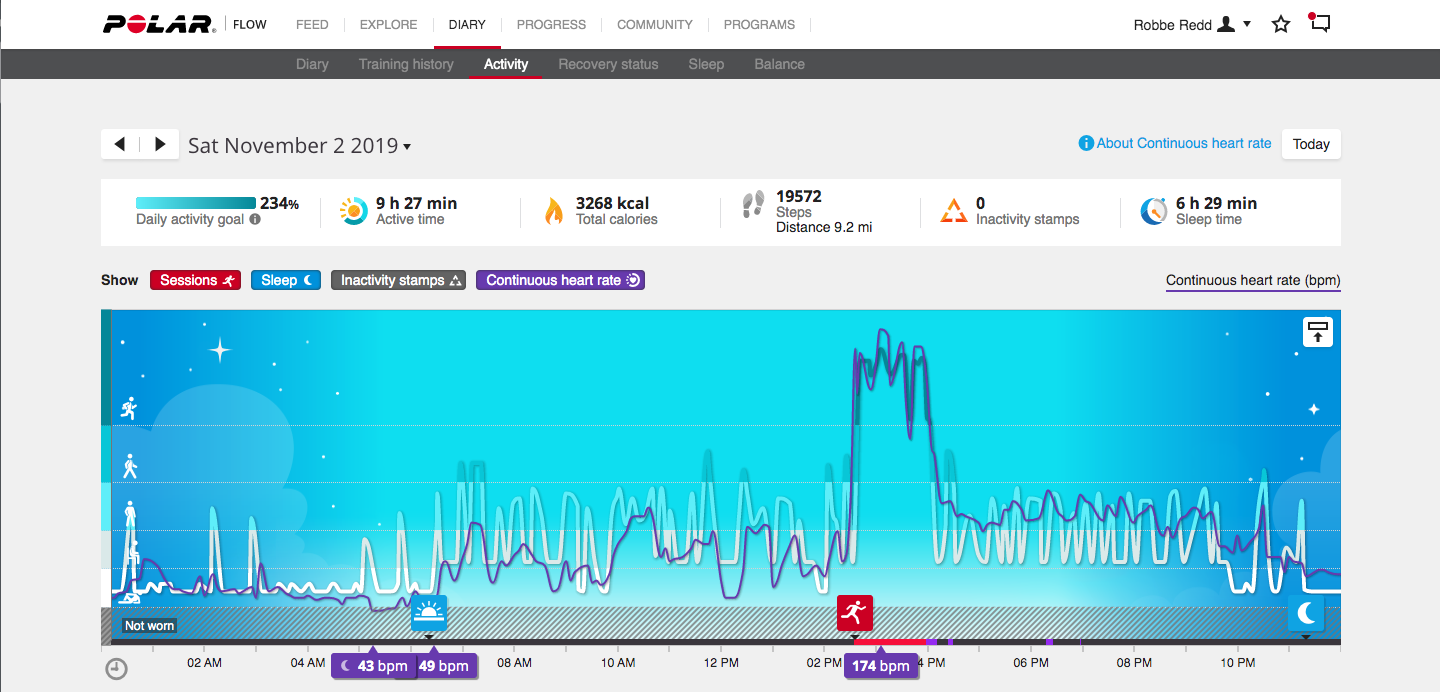
Along with the metrics, you can develop a full training plan through the Polar Flow web interface and upload it to your watch so your workouts are ready to go. I’ve actually done this before, and it’s pretty cool, but you also have to be consistent about your training so you’re not always redesigning and reuploading your training plan.
You can also create detailed intervals within Polar Flow, then sync them to your watch. It’s pretty useful, but also hard to figure out how to do, as it’s kind of buried on the site. To create intervals, you have to go to the Diary, then click a small ‘Add’ button, then click ‘Training Target.’ For a workout that so many runners do, it needs to be more clear.
» Built-in Power Meter
For whatever reason, power meters seem to be all the rage these days, with everyone accessorizing their NEXT% with a Stride sensor and ruining any street cred in the process. Ditch the Stride and save some $ because the Vantage V comes with its own power meter.
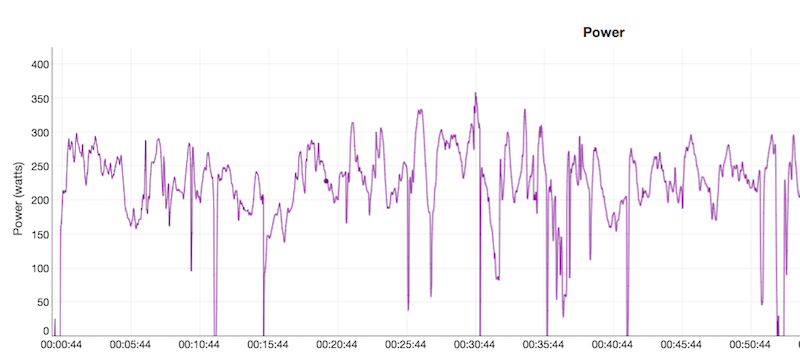
» Sleep Tracking
I actually never tracked my sleep before because I hate wearing watches to bed, so this was a first. To be honest, I’m kind of into now, mainly because I’m a horrible sleeper and want to somehow achieve a good level of “deep sleep.”
The sleep tracking provides you with your sleep time average, sleep score, light sleep, deep sleep, REM sleep, and long interruptions.
You can view daily sleep patterns through the app. But through Polar Flow online, for some weird reason, you can only view your sleep report in either monthly, 3-month, or 6-month snapshots. Strange.
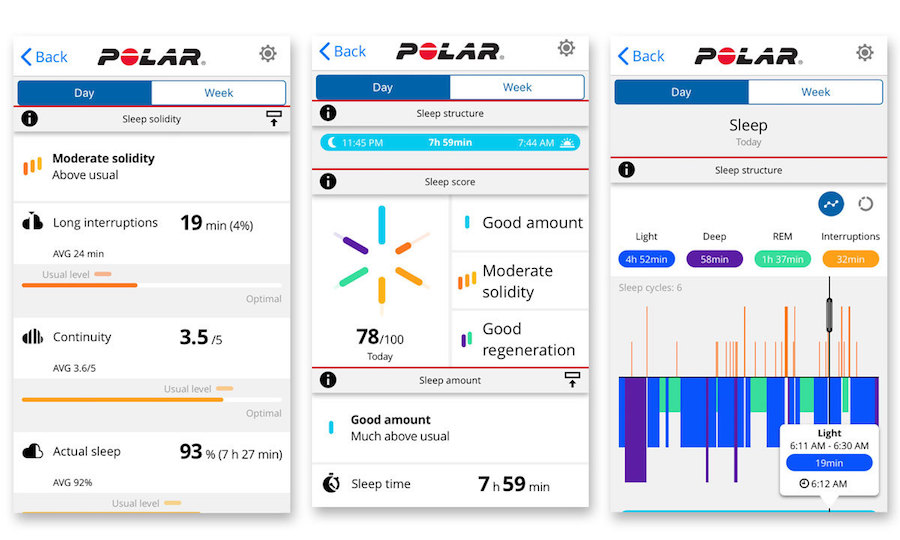
» Serene Breathing Exercises
Straight from the watch, you can do a serene breathing workout, guiding you to breathe a slow, regular rhythm. Not totally necessary, and I’m not sure why it’s the second item on the watch menu, but it’s nice to have.
Shop Polar Vantage
» User Experience
The UI/UX on Polar watches is… odd, in that it’s not very intuitive. Number one case in point— the workout start and pause/stop buttons are two different buttons. I can’t tell you how many times I f**ked this up.
The start button also doesn’t go to the workout screen at first. You have to press the back button, which then takes you to the main options screen. Then you can press the start button to begin training. But don’t press it again to pause! Because then you’ll just start a new lap. Press the back button to pause. Cause that makes sense.
There’s also just other odd placements. Like to switch between auto-pause or continuous recording on the watch, you can’t do it from the watch. You have to enter the app, then go into each type of activity and switch it off. I tried to figure this out for like an hour both on my own and through Google, and even then I had to email customer support.
Lastly, the look of the interface as a whole looks dated. The text, icons, etc. all look a bit mid-00’s. But so does Garmin’s interfaces, so it’s not that much different. Just me being picky.
» App Design
The app isn’t the worst I’ve seen. But it’s not great. It hasn’t really changed in the last two years, but it looks like an app from five years ago. Again, just some of the UI choices are odd. Also, because Polar provides so much data (a good thing), the screens become crowded trying to fit it all in (a bad thing).
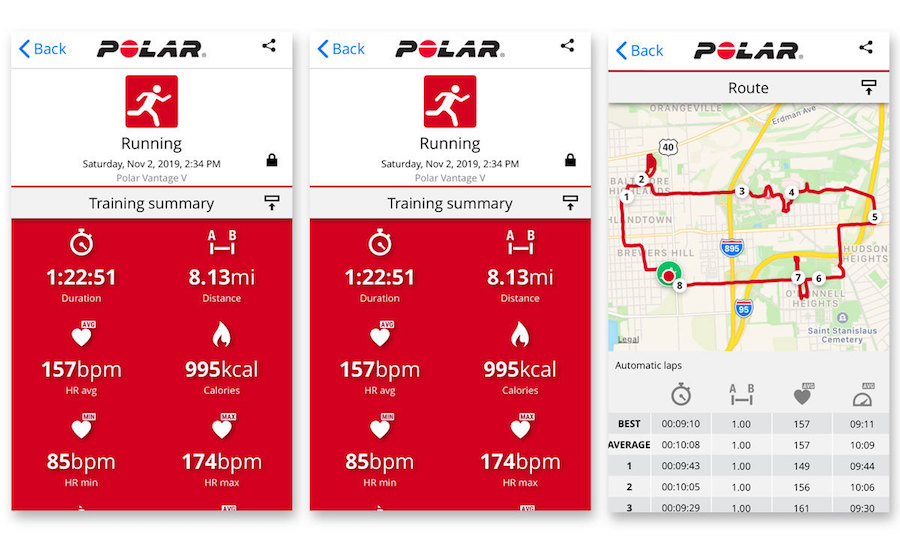
» No power off
I’ve been somewhere where I forgot my charger and had a low battery (story of my life), and have wanted to turn the watch off to conserve battery. Unfortunately, there’s no power off option, only restart.
The Polar Vantage V Titan comes in at $599.99 while the Vantage V comes in at $499.99.
The Polar Vantage M is priced at $279.95.
Shop Polar Vantage
While the GPS watch market is certainly becoming a bit crowded these days, there’s certainly a place for Polar.
That place is for serious runners who want to see accurate data and lots of it. Whether they’re in a training cycle keeping meticulous record of workouts and recovery, or simply want to track their sleep and daily activities, this is the best watch out there for it.
I mean, you can even plan out your whole season with a detailed graphical interface showing your activities and progress. It’s pretty crazy.
So yeah, if you’re a serious runner who wants everything possible related to actual running, then the Polar Vantage series (especially the Vantage V) has everything you need.
On the other hand, if you “need” music, payment from the watch, and wild and crazy watch faces, then stick with your Garmin.
You can pick up any watch in the Polar Vantage series at Running Warehouse using the shop link below.
Shop Polar Vantage
Have something to say? Leave a Comment
Re: buttons—it’s been a while since I wore one, but I seem to remember that the Timex Ironman had a start/lap button and a separate stop button. Seems weird now, but it’s the most popular running watch ever so maybe there’s a good reason for that button setup? Having used a Garmin for so long it does seem strange now.
Interesting point. Polar does a lot of marketing to the Tri crowd, so this could be why. Thanks!
compare it with garmin fenix 6/forerunner 945 or 245